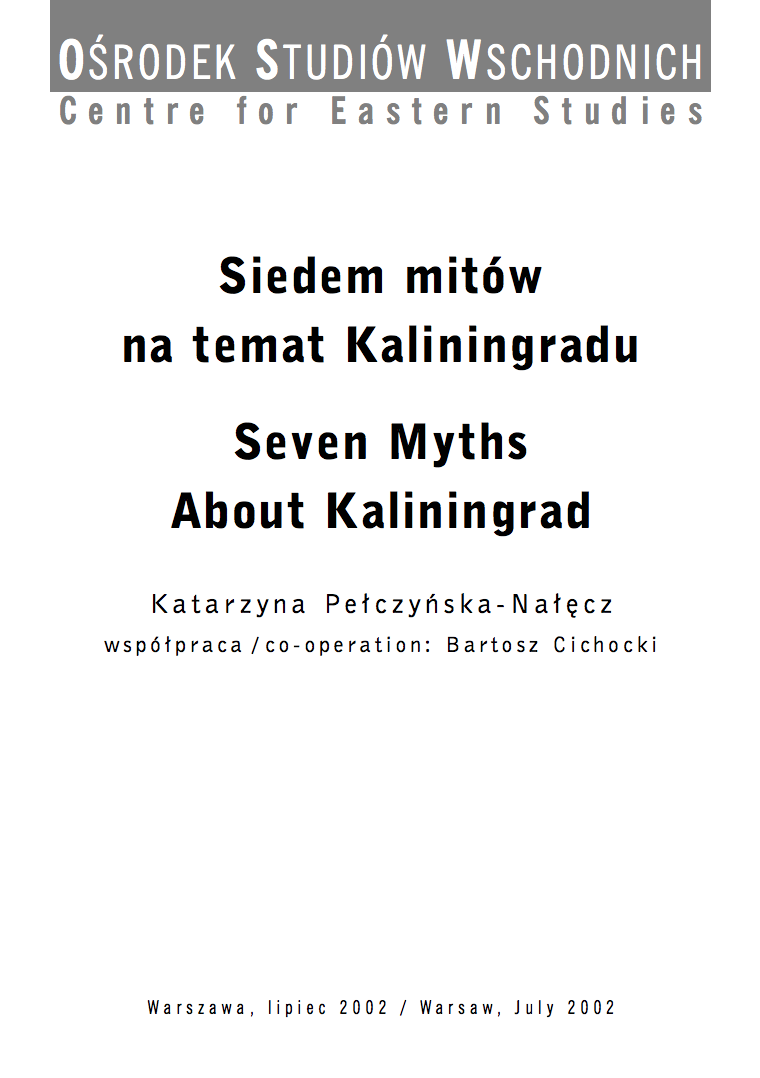Seven myths about Kaliningrad
Seven myths about Kaliningrad
Author(s): Katarzyna Pełczyńska-Nałęcz
Subject(s): Governance, Developing nations, Geopolitics
Published by: OSW Ośrodek Studiów Wschodnich im. Marka Karpia
Keywords: Kaliningrad; Russia
Summary/Abstract: Due to the integration to the European Union Poland and Lithuania intend to introduce overall visa obligation for the Russian citizens. Currently the Russians entering Poland may present at the border a voucher, an invitation, or an AB stamp, which entitles them to business travels. Lithuania maintains visa reliefs for the inhabitants of Kaliningrad and the Russians travelling from and to the enclave. The decisions encounter an opposition on the Russian side, which is of the opinion that the activities will result in the isolation of the enclave. This is why Moscow insists on the maintaining of a visa free movement between the enclave and the rest of Russia. The recent statements made by President Putin on the EU-Russia summit meeting in Moscow (May 29) and the Council of Baltic Sea States summit meeting in Petersburg (June 10-11) show a significant hardening of the Russian position on this matter. President Putin has even made the whole of the Russian relations with the European Union conditional on the resolving of the Kaliningrad problem according to the plans of Moscow. During the last few weeks not only the Russian politicians were making statements on the Kaliningrad issue but also representatives of the Polish, Lithuanian and Western authorities, as well as the EU officials. So far, the last ones have definitely rejected the possibility of adopting any rules going beyond the framework of the Schengen provisions towards Kaliningrad. The debate that has sparked off around the issue of Kaliningrad is mostly based on a series of unfounded assumptions, which are commonly regarded as obvious. Undoubtedly they make the rational resolving of the enclave problem even more difficult. In this text the author has attempted to identify and straighten out these "mythical" elements of the discussion, and next to set a possible course of further action.
Series: OSW Point of View
- Page Count: 20
- Publication Year: 2002
- Language: English, Polish
- Content File-PDF

